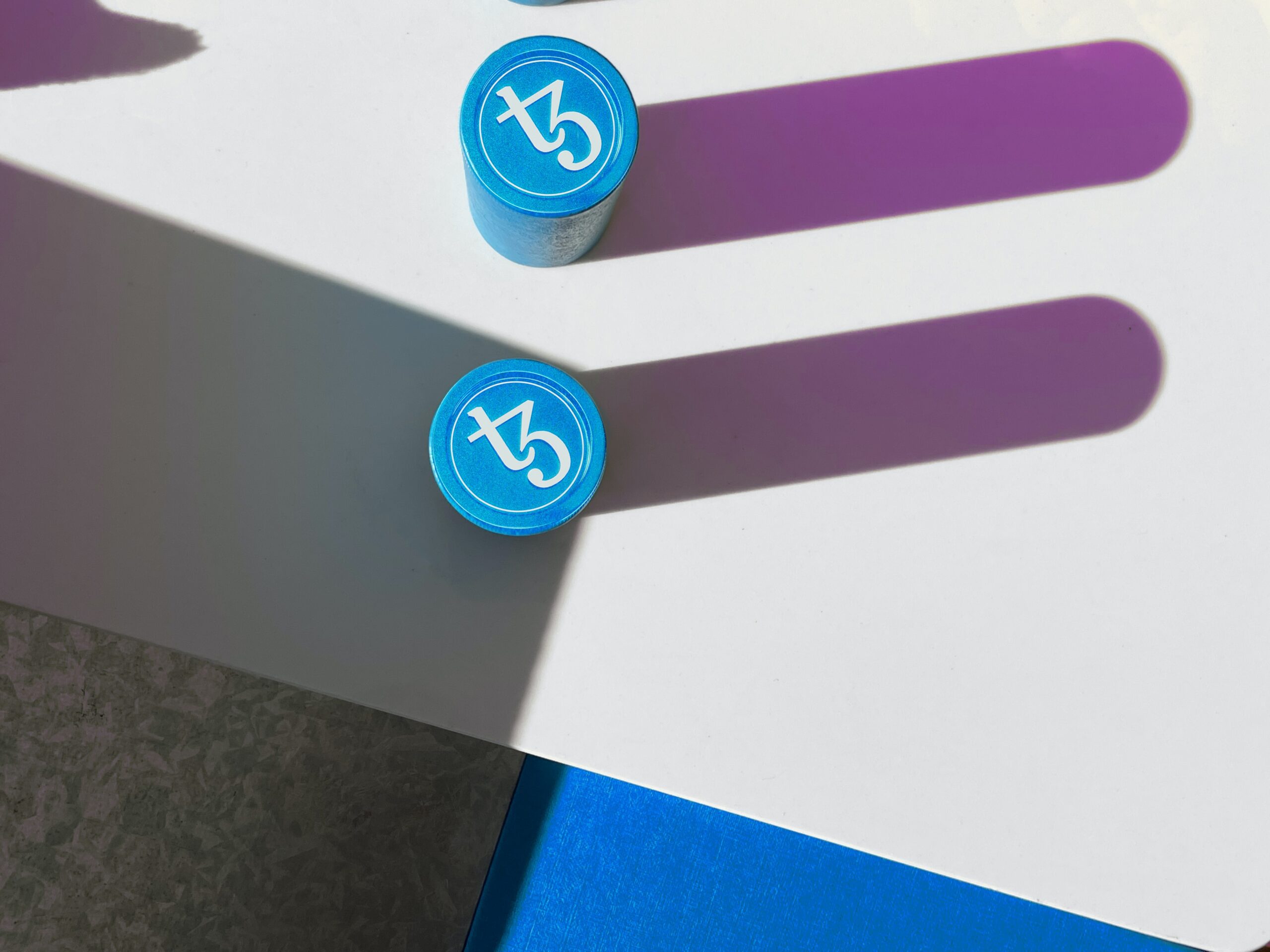In the world of cryptocurrencies, Tezos stands out for its unique approach to governance. Unlike other blockchain platforms that rely on off-chain decision-making processes, Tezos takes a revolutionary step with on-chain governance. By allowing token holders to actively participate in the decision-making process, Tezos fosters a democratic and collaborative ecosystem. In this article, we will explore the fascinating concept of Tezos and on-chain governance, uncovering how this innovative approach is shaping the future of decentralized digital systems.

What is Tezos?
Tezos is a blockchain platform that was created to enable decentralized applications and smart contracts. It is designed to be self-amending, meaning that it has built-in mechanisms for on-chain governance that allow the protocol to evolve and adapt over time. This unique feature sets Tezos apart from other blockchain platforms and makes it an attractive option for developers and users alike.
Background of Tezos
Tezos was launched in 2018 by Arthur and Kathleen Breitman. The project gained significant attention and raised a record-breaking amount of over $232 million during its initial coin offering (ICO). The Tezos blockchain is built on a proof-of-stake (PoS) consensus mechanism, which means that participants in the network can stake their tokens and participate in the block validation process.
Features of Tezos
One of the key features of Tezos is its self-amendment capability, which allows the protocol to upgrade and modify itself without the need for contentious hard forks. This is achieved through an on-chain governance mechanism that enables stakeholders to propose and vote on protocol upgrades. Another notable feature of Tezos is its formal verification capability, which allows developers to mathematically prove the correctness of their smart contracts.
Understanding On-chain Governance
Definition of On-chain Governance
On-chain governance refers to the process by which decisions and changes are made to a blockchain protocol directly on the blockchain itself. Instead of relying on off-chain governance models, where decisions are made by a select group of individuals or organizations, on-chain governance allows for a more decentralized and transparent decision-making process.
Advantages of On-chain Governance
On-chain governance brings several advantages to the table. First and foremost, it promotes decentralization by allowing all stakeholders to participate in the decision-making process. This ensures that no single entity has disproportionate control over the protocol. Additionally, on-chain governance enhances transparency as all proposals and voting results are publicly recorded on the blockchain. This fosters trust and accountability within the network.
Disadvantages of On-chain Governance
Despite its benefits, on-chain governance also has some limitations. One major disadvantage is the potential for slow decision-making processes. Since all proposals typically go through multiple phases of voting and testing, it can take a significant amount of time for changes to be implemented. Another challenge is the complexity of the decision-making process, which may deter less technically-inclined stakeholders from participating effectively.

Tezos and On-chain Governance
Integration of On-chain Governance in Tezos
Tezos was designed from the ground up to incorporate on-chain governance as a core component of its protocol. Through the use of smart contracts and formal voting procedures, Tezos enables token holders to propose, debate, and vote on changes to the protocol. This ensures that the network remains adaptable and can evolve over time without the need for contentious hard forks.
Benefits of On-chain Governance in Tezos
The integration of on-chain governance in Tezos brings numerous benefits to the platform and its stakeholders. Firstly, it allows for a more democratic decision-making process, where token holders have the power to shape the future of the protocol. This empowers the community and encourages active participation. Additionally, on-chain governance promotes stability and avoids contentious forks, which can lead to a split in the network and community.
The Role of Stakeholders in Tezos
Bakers and Their Role
In the Tezos ecosystem, bakers play a crucial role in block validation and governance. Bakers are token holders who have staked a certain amount of Tezos tokens and are chosen to create new blocks in the blockchain. They also participate in the governance process by voting on proposed changes and upgrades to the protocol. Bakers are incentivized to act honestly and in the best interest of the network, as they can be penalized or rewarded based on their performance.
Delegators and Their Role
Delegators are token holders who choose to delegate their staking rights to a baker. By delegating their tokens, delegators can still participate in the governance process by voting on proposals and upgrades, but they do not have the responsibility of running a baker node themselves. Delegators receive a share of the rewards and penalties earned by the baker they delegate to, based on the baker’s performance.
Developers and Their Role
Developers play a crucial role in the Tezos ecosystem by proposing changes and upgrades to the protocol. They can submit proposals through the Tezos governance process, outlining the intended changes and justifications. Developers are responsible for ensuring that the proposed changes are technically sound and align with the principles of the Tezos protocol. Their proposals are subject to scrutiny and evaluation by the Tezos community before being voted on.
Network Upgrades and Voting
When a proposal is submitted, it goes through multiple phases of voting and testing before it can be implemented. The Tezos governance process ensures that all stakeholders have the opportunity to participate and voice their opinions. During the exploration vote phase, token holders can signal their support or opposition to a proposal. If a proposal receives sufficient support, it moves to the testing phase, where it undergoes rigorous testing to ensure its security and compatibility. Once it passes the testing phase, a promotion vote is held to determine if the proposal should be accepted. Finally, if the proposal is adopted, it enters the adoption phase, where it is integrated into the Tezos protocol.

The Tezos Governance Process
Proposal Phase
The Tezos governance process begins with the proposal phase, where anyone in the community, including developers and token holders, can submit a proposal for a change or upgrade to the Tezos protocol. Proposals are typically submitted as smart contracts, outlining the details of the proposed changes and any associated documentation.
Exploration Vote
After a proposal is submitted, an exploration vote is held to gauge the sentiment of the Tezos community. Token holders can cast their votes to signal their support or opposition to the proposal. The exploration vote is not binding, but it provides valuable feedback to the proposal’s author and the community.
Testing Phase
If a proposal receives sufficient support during the exploration vote, it moves to the testing phase. During this phase, the proposal undergoes rigorous testing to ensure its security, compatibility, and feasibility. Developers, auditors, and other stakeholders review the proposed changes and test them extensively to identify any potential issues or flaws.
Promotion Vote
Once a proposal has successfully passed the testing phase, a promotion vote is held to determine whether the proposal should be accepted. This vote is binding, meaning that the outcome determines whether the proposal goes forward or not. Token holders can cast their votes in favor or against the proposal, and the voting period typically lasts for a specified duration.
Adoption Phase
If a proposal is accepted through the promotion vote, it enters the adoption phase. During this phase, the approved changes are integrated into the Tezos protocol. The changes are typically implemented as amendments to the existing blockchain, ensuring a smooth transition without requiring a hard fork or disrupting the network.
Key Features of Tezos On-chain Governance
Self-Amendment
One of the key features of Tezos on-chain governance is its ability to self-amend. This means that the protocol can evolve and adapt without the need for contentious hard forks or interventions by central authorities. Token holders have the power to propose and vote on changes, allowing the network to continuously improve and upgrade itself.
Upgradeability
Tezos’s on-chain governance enables seamless upgrades to the protocol. Through the governance process, new features, bug fixes, and improvements can be proposed and implemented without disrupting the network or requiring users to take any action. This upgradeability ensures that Tezos can remain competitive and responsive to evolving market needs.
Flexibility and Adaptability
The on-chain governance mechanism of Tezos provides the protocol with flexibility and adaptability. The ability to propose and vote on changes means that Tezos can quickly respond to emerging trends, address security concerns, and introduce new functionalities. This flexibility allows Tezos to stay at the forefront of technological advancements and remain relevant in a rapidly evolving blockchain landscape.
Transparency and Accountability
On-chain governance brings transparency and accountability to the Tezos ecosystem. All proposals, votes, and outcomes are recorded on the blockchain, creating a verifiable and auditable record of the decision-making process. This ensures that all stakeholders are aware of the changes being proposed and have the ability to hold decision-makers accountable for their actions.
Challenges and Criticisms of Tezos On-chain Governance
Complexity
One of the main challenges of Tezos on-chain governance is its complexity. The multi-phase process, involving proposal submission, voting, testing, and adoption, can be intimidating and difficult to understand for newcomers and less technically-inclined stakeholders. This complexity may discourage some participants from actively engaging in the governance process.
Sluggish Decision-making
The on-chain governance mechanism of Tezos, while designed to be democratic and inclusive, can sometimes result in sluggish decision-making. The multiple voting and testing phases can take a significant amount of time, slowing down the implementation of proposed changes. This delay may hinder the platform’s ability to quickly respond to emerging needs and seize opportunities.
Potential Centralization
While on-chain governance aims to promote decentralization and inclusivity, there is a potential risk of centralization in the Tezos ecosystem. The power to propose and vote on changes is ultimately in the hands of token holders, and those with a significant amount of tokens may have disproportionate influence. This concentration of power could lead to decision-making that favors certain interests or limits the participation of smaller stakeholders.
Comparison with Off-chain Governance
Differences between On-chain and Off-chain Governance
The primary difference between on-chain and off-chain governance lies in where the decision-making process takes place. On-chain governance occurs directly on the blockchain, with proposals, voting, and implementation happening on-chain. Off-chain governance, on the other hand, involves decision-making processes that occur outside of the blockchain, often among a select group of individuals or organizations.
Advantages of On-chain Governance over Off-chain Governance
On-chain governance offers several advantages over off-chain governance models. First and foremost, it promotes decentralization by allowing all stakeholders to participate in decision-making, whereas off-chain governance models tend to concentrate power in the hands of a few. On-chain governance also enhances transparency, as all proposals and voting results are publicly recorded on the blockchain, leaving no room for manipulation or hidden agendas.
Disadvantages of On-chain Governance compared to Off-chain Governance
Despite its advantages, on-chain governance has some disadvantages when compared to off-chain governance. The multi-phase process of on-chain governance, involving proposal submission, voting, and testing, can be time-consuming, leading to slower decision-making compared to the more streamlined processes of off-chain governance. Additionally, the complexity of on-chain governance may deter less technically-inclined stakeholders from participating effectively.
Real-World Examples of Tezos On-chain Governance
Athens and Babylon Network Upgrades
Tezos has successfully implemented multiple network upgrades through its on-chain governance process. One notable example is the Athens upgrade, which introduced gas optimizations and improved the efficiency of the protocol. Another significant upgrade is the Babylon upgrade, which added new Michelson instructions, enhanced smart contract functionality, and improved overall performance.
Amendment Process
The Tezos on-chain governance process has facilitated multiple amendments to the protocol. These amendments address various aspects of the protocol, ranging from security and performance improvements to the addition of new features. The transparent and democratic nature of the on-chain governance process ensures that all stakeholders have a say in the amendments, promoting inclusivity and fairness.
Community Initiatives and Funding
Tezos on-chain governance has also supported community initiatives and funding. Through the governance process, proposals for community-driven projects and initiatives can be submitted, allowing the Tezos community to allocate resources and funding to projects that align with the platform’s goals. This ensures that the development and growth of the Tezos ecosystem are driven by the collective decision-making of its stakeholders.
Conclusion
Tezos and its on-chain governance mechanism have revolutionized how blockchain protocols can evolve and adapt over time. By enabling token holders to propose, debate, and vote on changes to the protocol, Tezos ensures that no single entity holds disproportionate control, promoting decentralization and transparency. While there are challenges and criticisms associated with on-chain governance, Tezos continues to demonstrate the potential of this governance model in the blockchain space. As the Tezos ecosystem continues to grow, its on-chain governance will play a crucial role in shaping its future direction and ensuring its long-term success.

